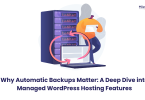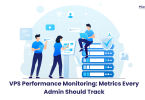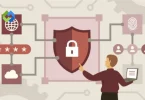This guide is a short, real-world tutorial to help you get back online if you’re new to digital privacy or were barred for no clear reason. It includes proxies and other smart recommendations.
Table of Contents
Table of Contents
Why Are You Being Blocked in the First Place?
Let’s start with the most basic viewpoint. Your device’s IP address is like a digital fingerprint that shows where you are when you access the site. You may face blocking if a platform associates you with suspicious activities. This is especially true on sites that handle sensitive information or those that host lots of content, like streaming platforms.
Other common reasons for blocks include:
- Browser activity that seems strange (like bots and automation)
- Going beyond rate restrictions (too many requests in a short amount of time)
- Geolocation blocks (certain content is only available in select countries)
- Company firewalls or school networks filtering access
The Proxy Fix: Your First Line of Defense
A proxy server connects your device to the internet in a unique way. Your request goes through the proxy first instead of going directly to the website, masking your IP address in the process. This lets you:
- Hide your real IP location
- Avoid rate-limit triggers
- Bypass geo-blocks
- Appear as a different user entirely
In simpler terms, it’s like wearing a disguise while browsing. And with thousands of IPs to choose from, a reliable proxy network can make you practically untraceable.
Types of Proxies That Work Best
Not all proxies are the same. The kind you use can have a huge effect on how well it works and how reliable it is.
- Residential Proxies: These use real IP addresses that Internet Service Providers (ISPs) give out. Because they resemble real people, they are much less likely to face bans.
- Datacenter Proxies: Faster and cheaper, but often easier to detect by smart websites. They work best for tasks where speed is more important than stealth.
- Mobile Proxies: Super effective for accessing mobile-only content or simulating mobile traffic. They also rotate IPs frequently, boosting your anonymity.
Want to explore more advanced options tailored to unblock specific sites? Here’s a detailed walkthrough on how to unblock platforms like OnlyFans — check for more.
Common Mistakes to Avoid
Using a proxy is easy. Misusing it, though, is even easier. If you don’t exercise caution, you may still face blocking. Below are some of the reasons that will make you vulnerable to blocklisting:
- Using Free Proxies: They are often overcrowded, unreliable, or even run by shady actors who collect your data.
- Ignoring Browser Fingerprinting: Hiding your IP doesn’t guarantee sites won’t be able to figure out who you are.
- Not Changing Your Address: Some sites may restrict access if they detect multiple requests coming from the same place.
Top Tools to Combine With Proxies
To stay one step ahead, pair your proxy with the right strategies. Do the following:
- To cut down on tracking, use private browsing or sandboxed browsers.
- Employ VPNs to boost your anonymity even further.
- User-agent switchers can make it look like you’re behind a completely different device.
- Rotating proxies are your best option if you want to change your IP address periodically.
When you blend all these correctly, accessing blocked sites becomes smooth and worry-free.
When Proxies Aren’t Enough: Try These Tactics
Sometimes, websites use advanced detection methods like deep packet inspection or JavaScript-based behavior monitoring. In such cases, you might need to:
- Use headless browsers with human-like interaction scripts.
- Switch to stealth-mode tools like Puppeteer or Selenium with proxy support.
- Monitor server responses to adjust your request behavior accordingly.
Marketers and researchers use proxies to collect data and monitor the performance of various areas. This is a critical strategy of big companies to ensure that their products are well-marketed globally.
Final Thoughts
Access restrictions are more frequent than ever on the internet today. But that doesn’t mean you have to stop trying. If you have proxies, especially good residential or mobile ones, it’s quick, easy, and safe to get back in.
Just remember to use trustworthy services, keep up with trends in access, and always be honest and legal when you’re online. The appropriate proxy setup is your way back to the web, whether you’re unblocking a single site or researching across multiple ones.














